Anyone who has explored big cities in Japan might notice the endless rows of incongruous concrete buildings dominating their skylines. Despite the elegance and restrained beauty the Japanese are famous for, I wondered why they built those ugly boxes of uninspiring edifices. Japan’s ambition to control much of Asia in the 20th century – pushing away the British, the French, and the Dutch from their colonial possessions in the continent – as well as their alliance with the Germans during the Second World War resulted in severe reprisals from the Allies. In the final months of the war, incendiary bombs were dropped all over Japan, targeting military facilities, factories, and pretty much everything else.
Tokyo, Osaka, Nagoya and Kobe, among other cities, were heavily damaged. The air raids not only managed to reduce Japan’s strategic facilities to rubble, but also the country’s invaluable heritage sites. Following Japan’s defeat in the war, and supported by U.S. aid, the country’s economy experienced a decades-long boom which successfully propelled Japan to become the world’s second biggest economy. To provide housing for the workforce, as well as a part of the country’s reconstruction from the ashes of war, many multi-story buildings were constructed, taking a rather spartan form focusing on functionality rather than beauty.
However, not all was destroyed during the war. Apart from Himeji Castle which miraculously escaped destruction, a small city called Kurashiki managed to stay unscathed amid the Allies’ intense air raids. I had never heard of the name before, and if it wasn’t for the advice from a Tokyo businessman whom James and I met over dinner at a sushi bar in Okayama station, we would have skipped this city altogether. In the middle of a conversation about food and regional identity in Japan, he mentioned Bikan, Kurashiki’s old merchant quarter which he really recommended. Less than 20 km away to the southwest of Okayama, Kurashiki was easily reached from where we stayed, and less than 24 hours after the dinner we were already on our way to Kurashiki, heeding the businessman’s advice.
When we left Kurashiki station, the typical modern Japanese environs welcomed us. However, 20 minutes later as we turned at a street corner, we arrived in a completely different place. No tall concrete buildings in sight, only 17th- and 18th-century warehouses as far as we could see. Timber panels, black tiles, and fan-shaped roof ends were certainly a stark contrast to the dull facades of post-war buildings. In the heart of the historical district, a green-tinged canal ran through the scenic neighborhood, overlooked by beautiful structures along its banks. Perhaps Bikan’s peaceful ambiance contributed to the establishment of Japan’s first museum for Western art in 1930, housing the works of Monet, Gauguin and Renoir among other renowned painters.
Declassified documents show that Kurashiki was among the targets of aerial bombings aimed at taking full control of Japan. But the country’s surrender on August 15, 1945 spared Kurashiki from the same fate suffered by other places across Japan, hence saving the city’s invaluable cultural treasures. A walk down the atmospheric streets and alleys in Bikan was very sobering as we could imagine how different Japan would have looked had no one instigated the war in the first place.

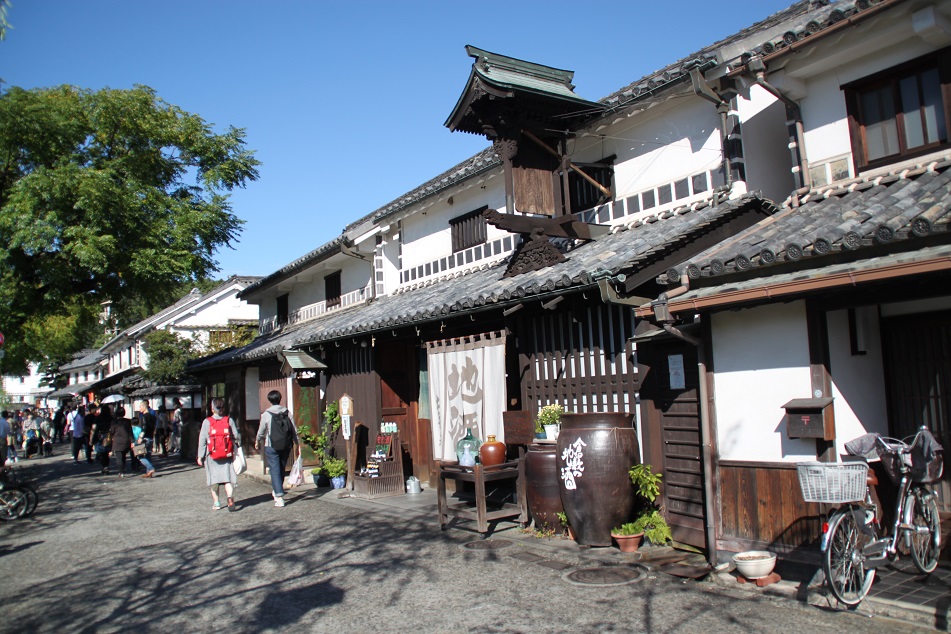
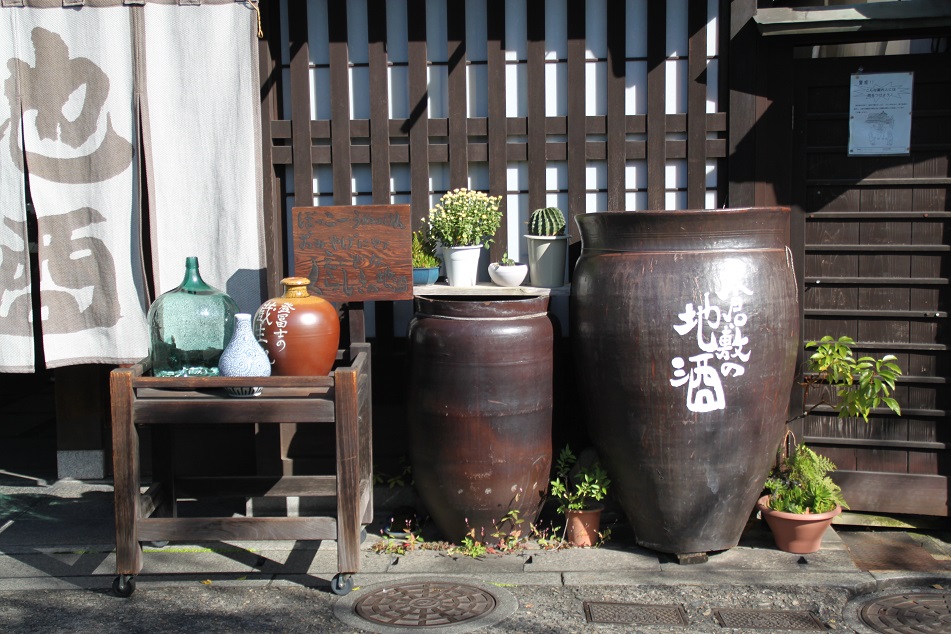
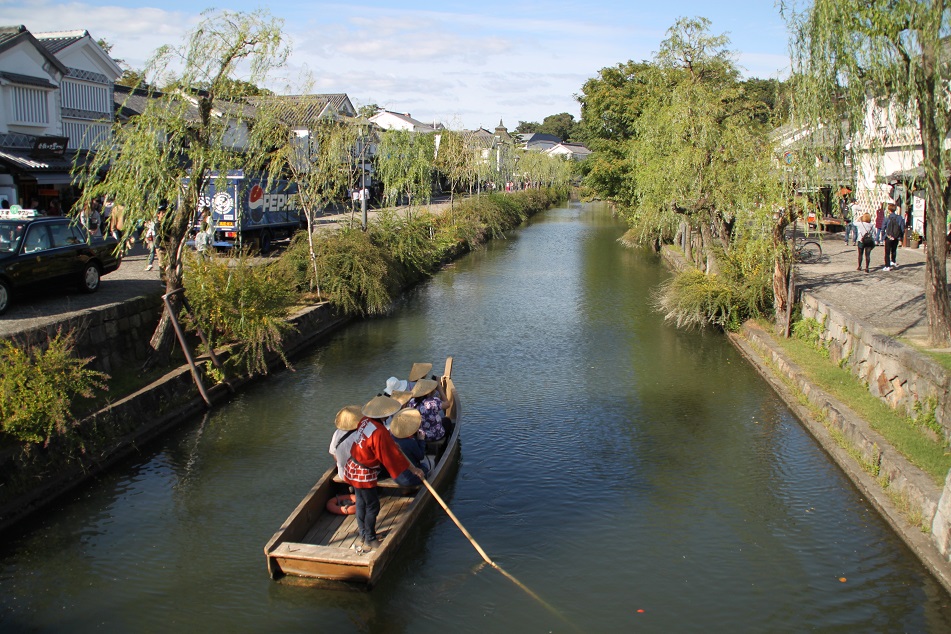

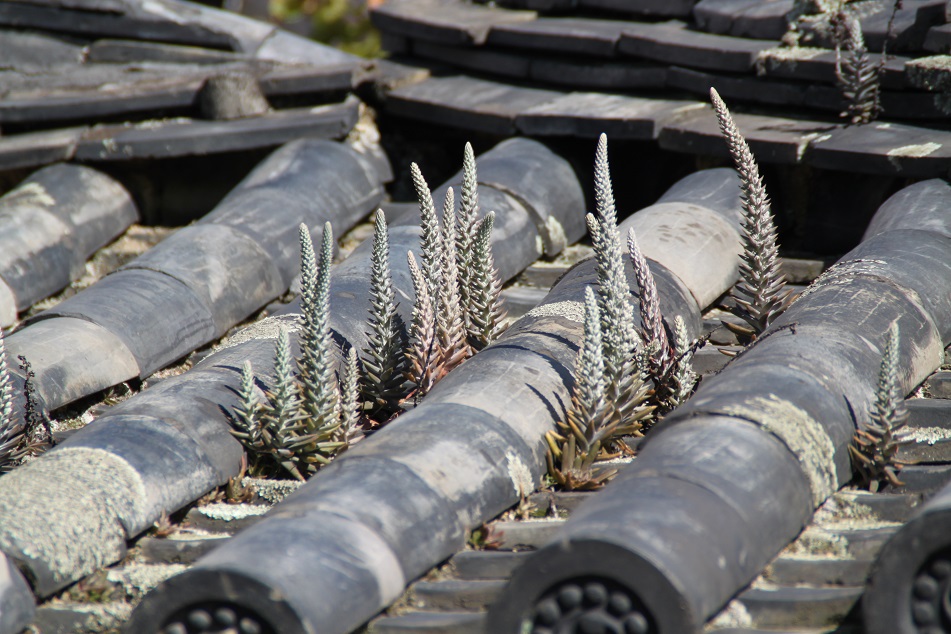


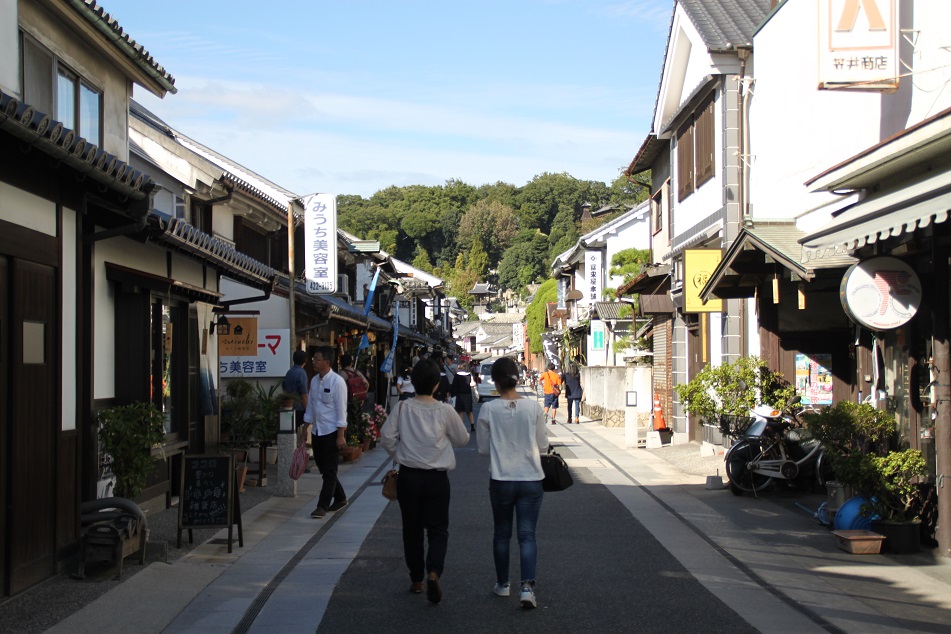
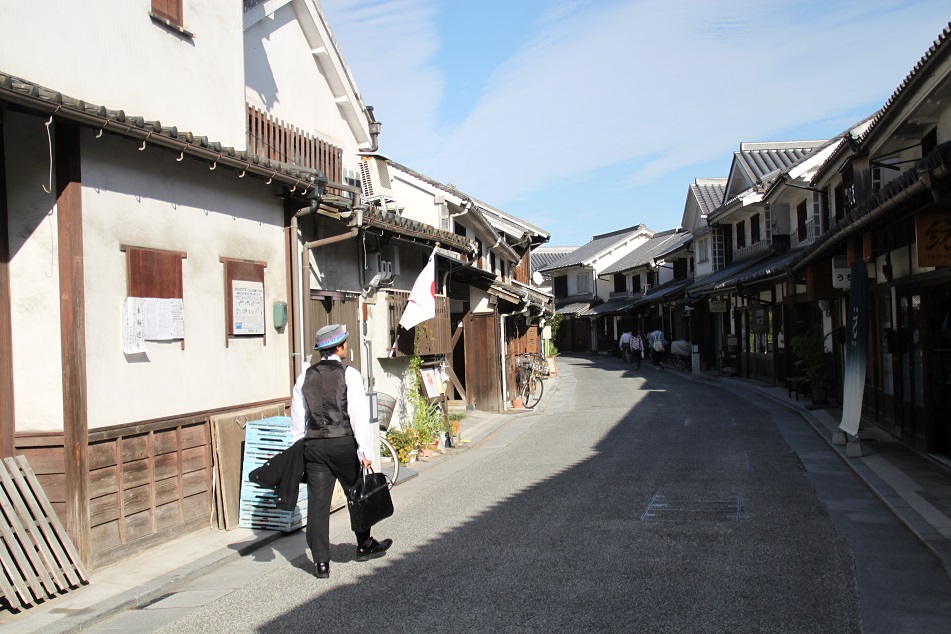


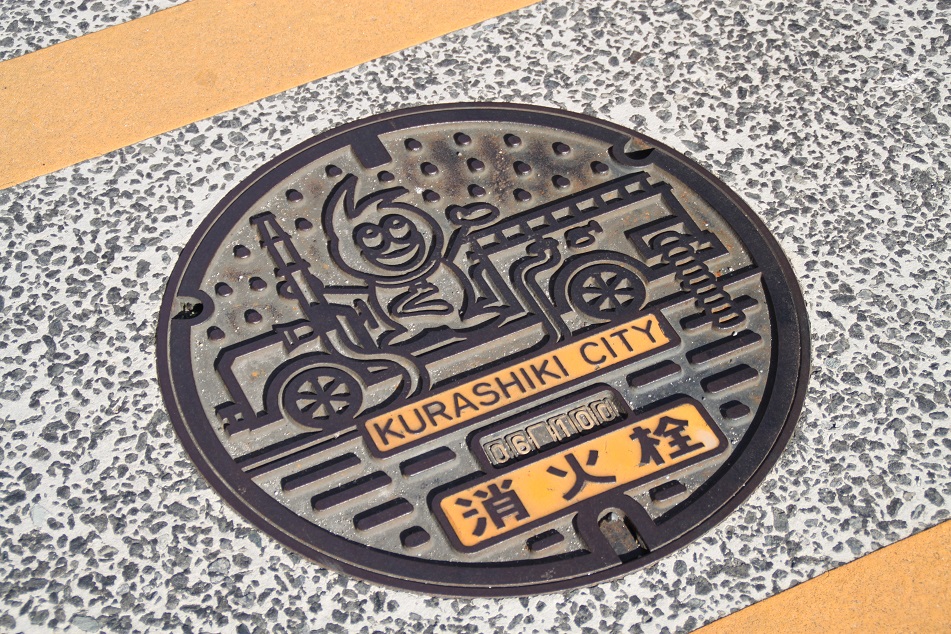



amazing –
LikeLike
Hi Beth. If only I had more time in Kurashiki to explore the museums!
LikeLiked by 1 person
I have never heard about it before. Thanks for the info
LikeLike
Had we not met that businessman from Tokyo, we would have missed the opportunity to see how Japanese cities would have looked like if they were not bombed. Thanks for reading!
LikeLiked by 1 person
Great 🙂
LikeLike
This is so beautiful! I had never heard of Kurashiki but now whenever I visit Japan it will be a part of my itinerary for sure.
LikeLike
Kurashiki is really easy to reach whether you’re from Osaka or Hiroshima as the mid-sized city is conveniently located on the Sanyo line (one of Japan’s Shinkansen lines). Even if it’s not in your plan, a visit to Kurashiki would be worth the detour, as we discovered it ourselves.
LikeLike
I wonder if Japan’s mega cities would have turned out any different if there had been no war! Kurashiki looks beautiful Bama. Reminds me so much of Takayama. Probably a lot less touristy. Love the roof details and the windows of the old spinning mill.
LikeLike
I believe they would, Madhu. I can see why Bikan district of Kurashiki reminds you of Takayama. The latter is much smaller in size, though, and beyond Bikan, Kurashiki felt quite modern actually. If I had more time, I would have gone to Western art museum!
LikeLike
Beautiful! Should have known of this when I was in Kyoto back then. Thanks for sharing!
LikeLike
The good thing is you can go to Kurashiki quite easily from most parts of Honshu thanks to Japan’s extensive Shinkansen network. So next time you’re in the country you can check this city out! Thanks for reading, Rizam!
LikeLiked by 1 person
Looks so beautiful like a movie set!!!! ❤️❤️❤️❤️
LikeLike
You’re right! I can imagine a movie about pre-war Japan shot in Bikan.
LikeLiked by 1 person
Wonder post Bama. I went to Japan years ago and would love to go back.
LikeLike
Thanks Nicole! I haven’t heard anyone who has been to Japan and doesn’t want to go back — including me. It’s a really special country, indeed.
LikeLiked by 1 person
Kurashiki looks beautiful.
A beautiful dew drop as if time has stood still here admiring the beauty.
Superbly documented too.
LikeLike
Well said, Prantik! This part of Kurashiki felt like a time capsule, allowing modern visitors to imagine how life in Japan would have looked like many years ago. Thanks for reading!
LikeLike
Ini kota impian banget buat jalan-jalan ya. Jepang banget, dan masih terasa tradisional. Sepintas pemandangan kotanya mengingatkanku pada Malaka atau Hoi An yang berkanal-kanal dan penuh bangunan lawas. Aku juga baru dengar nama kota ini, tapi meskipun terasa ‘agak asing’ di telinga tapi kotanya ramai banget ya ternyata. Untung Jepang keburu nyerah ya pada perang dunia kedua, sehingga kota ini bisa terselamatkan. Satu tempat lagi yang bisa dimasukkan ke dalam catatan. Tfs Bam!
LikeLike
Bener banget, Bart. Daerah Bikan ini semacam Kota Tua yang dijaga keasliannya dan dijadikan daya tarik wisata. Waktu aku ke sana memang cukup ramai sih, tapi mayoritas turisnya lokal karena kalau gak salah itu pas lagi musim liburan anak sekolah di Jepang. Coba kamu ke Jepang pas musim liburan di sana deh Bart, dan saksikan dengan mata kepala sendiri betapa tertib, considerate, dan sopannya orang-orang sana. Meskipun suatu tempat wisata padat, gak ada yang namanya dorong-dorongan, bahkan senggol-senggolan. Gak ada yang teriak-teriak manggil teman atau saudaranya. Kalau ada rencana ke Prefektur Okayama, jangan lupa mampir ke Kurashiki ya.
LikeLiked by 1 person
Noted Bam. Ngomong-ngomong mendingan nginep di sini atau dari point dirimu nginap? Karena kalau memungkinkan kayanya lebih asyik, jadi bisa dapat suasana sore dan malamnya juga.
LikeLike
Hmm, mungkin lebih enak nginep di dua-duanya Bart, semalam di Kurashiki, dua malam di Okayama. 😀 Btw, kalau diterusin dari Okayama, Kurashiki teruuus ke arah barat bakal ketemu Hiroshima. Seandainya pas aku ke Jepang ada waktu lebih pasti udah aku sempetin ke sana sih.
LikeLiked by 1 person
Sip, jadi memungkinkan ya untuk nginep di Kurashiki.
Hehehe artinya dirimu harus balik ke Jepang lagi Bam 🙂
LikeLike
Kalau balik lagi ke Jepang itu memang impianku, Bart. Bener-bener salah satu negara yang paling berkesan yang pernah aku kunjungi. 🙂
LikeLiked by 1 person
Pastinya … Ditunggu cerita selanjutnya Bam.
LikeLike
Semoga sabar menunggu. Antrian masih banyak soalnya.. 😀
LikeLiked by 1 person
Great post! Kurashiki adding to the bucket list!
LikeLike
Thanks John & Susan! Despite its modest size, Kurashiki really is worth a visit thanks to its historical quarter.
LikeLike
What a beautiful city! I caught glimpses of back-in-the-day Japan in Kyoto, Asakusa, Narita (the city) and other places, but I’ve always yearned for a bit more. One of these days I’ll return and do a proper small-town Japan tour. I wonder if, had WWII not happened, things would’ve gone a bit differently, sometimes it also feels that Japan destroyed a bit of its heritage during the bubble economy of the 1980s…
How nice that the businessman got chatting with you guys, do you speak Japanese if you don’t mind me being nosy?
Fabrizio
LikeLike
Unfortunately in many parts of the world economic development meant sacrificing cultural heritage to make way for new buildings deemed more profitable (and it still does in some places). Luckily not all is lost, and I can see across Asia how education has proven effective in raising people’s awareness for cultural preservation.
I can only understand just a little over a dozen Japanese words. So no, I don’t speak the language. That person talked to us in English, although with a very strong Japanese accent which at times made me struggle to understand him. My friend sat closer to him, so he could pick up more information.
LikeLiked by 1 person
Very pretty buildings. It reminds me a little of Kawagoe which has buildings like these too. I especially like the canal meandering through the town. 🙂
LikeLike
I had to look up Kawagoe just now, and it looks so pretty! Maybe next time I go to Japan I should make an effort to visit this city. Thanks for the info!
LikeLike
Oh yes, Kawagoe was a pretty little town with all the Edo style buildings…happy to share the info 😄
LikeLiked by 1 person
Oh, I love love love this place! Your photos show this city off beautifully, especially the ones that show the simple but elegant details. What incredible luck to meet someone who steered you here; those are often the most rewarding parts of a trip.
LikeLike
You would love exploring Japan’s historical towns, Lex — well, you would love Japan! That night James and I went to that restaurant because we wanted to try some local delicacies which were supposedly hard to find outside Okayama. I remember we were the only foreigners there, so this person was probably curious and started talking to us. I’m so glad he sat next to James and told us about Kurashiki!
LikeLiked by 1 person
This looks very interesting Bama!
I haven’t yet been to Japan, but when I do, this village looks promising!
LikeLike
Hope you’ll make it to Kurashiki when you visit Japan one day, Victoria! And hopefully that day comes sooner than later!
LikeLiked by 1 person
Tampak rapi sekali kotanya ya..
LikeLike
Di Jepang meskipun itu kota besar dan bangunannya rapat-rapat, tetap terlihat jauh lebih rapi kalau dibandingkan di Indonesia sih. 😀 Apalagi kawasan Bikan ini yang memang menjadi salah satu daya tarik utama kota Kurashiki.
LikeLiked by 1 person
terimakasih
LikeLike
Your comment “how different Japan would have looked had no one instigated the war in the first place,” is such a sad truth about world history and the lust for power and control. Its wonderful that at least a few places mostly escaped, and Bikan is a beautiful example.
LikeLike
Unfortunately since humans began organizing themselves, the struggle for power and control has become an inseparable part of our history. We can always learn from the past, but at times some people will go down the same dark path others had gone. Places like Bikan provides a sobering reminder of what we risk of losing if we choose to ignore the past.
LikeLike
If I ever plan my trip to Japan in the future, I shall contact you. Beautiful photos as always.
LikeLike
Please do, Robin. I would be more than happy to help! Thanks for dropping by again after a while! Any chance to resurrect your blog? 🙂
LikeLike
Quite unlikely, unfortunately. I guess, I’m more of a “instagrammer” than a blogger these days. But rest assured, I still write and take as many pictures as possible! However, I write for academic purpose and only take picture leisurely. Not sure if I can combine these two 😀
Come back to England again and explore the North this time!
LikeLike
I’ve been thinking of writing a post about you and Reza, since both of you were instrumental in my early years of blogging. We’ll see. 🙂
Would love to go back to England, with a visit to Scotland!
LikeLike
After spending the whole morning in Himeji, and taking the wrong (slow) train back to Okayama, I guess we arrived in Kurashiki a little too late to visit the Western art museum. Looks like we’ll have to go back another time and spend a night there – just imagine how magical it must be after dark! A lovely post, Bama, and an important reminder of what we all lose in times of war.
LikeLike
The train back to Okayama was indeed slow, but it was quite an interesting experience nonetheless. Spending a night in Bikan, trying the local food, and visiting the Western art museum sound like valid reasons to go back! And speaking of war, Kurashiki teaches us all that we should never take things for granted. Thanks James!
LikeLiked by 1 person
Your blog is absolutely beautiful! Amazing photography skills
LikeLike
Much appreciated, Kadyn! Glad you enjoyed my photos!
LikeLike
Japan has always had such a fascinating culture. Thanks for sharing this little known place with us!
LikeLike
Hi Henry! The culture is exactly the reason why so many people are so captivated by Japan, and the reason for me to go back one day in the future. Thanks for reading!
LikeLike
It is a shame what happens during a war. The whole country could look like this in a different world. Luckily it was spared so we have a glimpse of what it was. Thanks for sharing.
LikeLike
Jeff Bell! You’ve been MIA in the blogging world! Always nice to have you back. You’re right about how Japan could have looked like had the war not happened. It was a lofty price to bear to teach humanity that war would only bring sorrow — although the lesson is often lost in later generations, unfortunately.
LikeLike
Yes, I have been MIA but I went to Sri Lanka for three weeks and have some stuff to write. Plus, I have missed reading many blogs. I will hopefully have more time now!
LikeLike
Looking forward to reading your Sri Lanka posts!
LikeLike